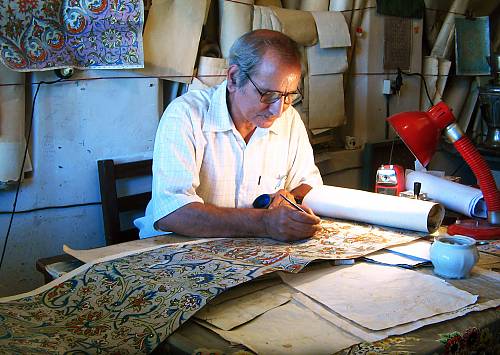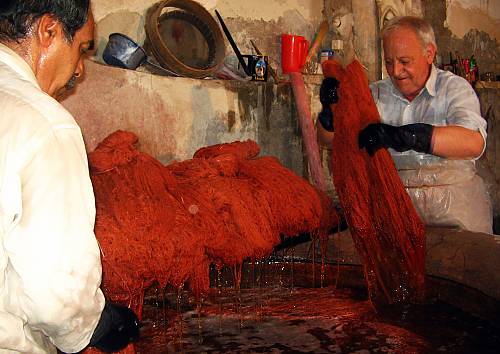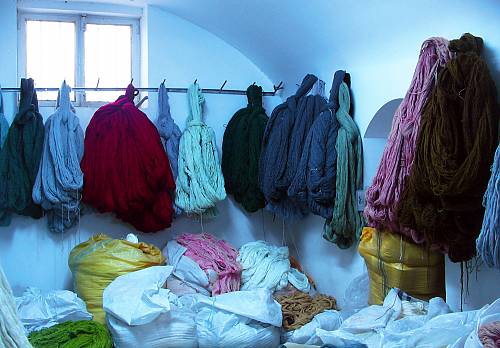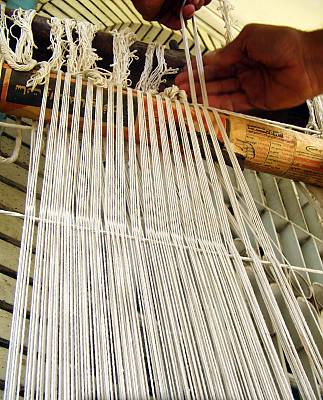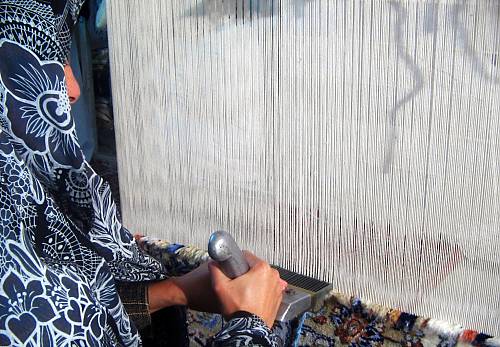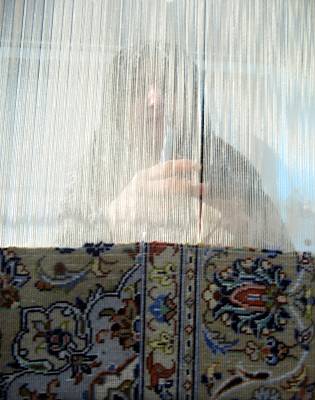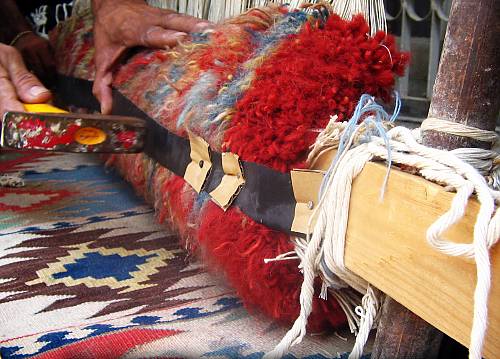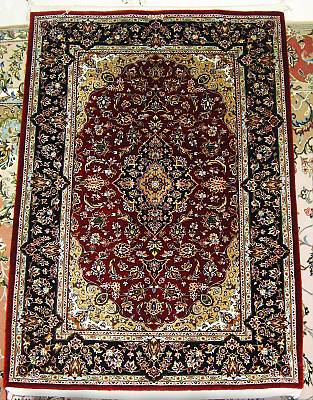Traditional skills of carpet weaving in Kashan
Inscribed in 2010 (5.COM) on the Representative List of the Intangible Cultural Heritage of Humanity

Long a centre for fine carpets, Kashan has almost one in three residents employed in carpet-making, with more than two-thirds of the carpet-makers being women. The carpet-weaving process starts with a design, elaborated from among a series of established styles, including motifs such as flowers, leaves, branches, animals and scenes taken from history. Woven on a loom known as a dar, the warp and woof are of cotton or silk. The pile is made by knotting wool or silk yarns to the warp with the distinctive Farsi knot, then held in place by a row of the woven woof, and beaten with a comb. The Farsi weaving style (also known as asymmetrical knotting) is applied with exemplary delicacy in Kashan, so that the back side of the carpet is finely and evenly knotted. The colours of Kashan carpets come from a variety of natural dyes including madder root, walnut skin, pomegranate skin and vine leaves. The traditional skills of Kashan carpet weaving are passed down to daughters through apprenticeship under instruction from their mothers and grandmothers. Apprenticeship is also the means by which men learn their skills of designing, dyeing, shearing, loom-building and tool-making.
